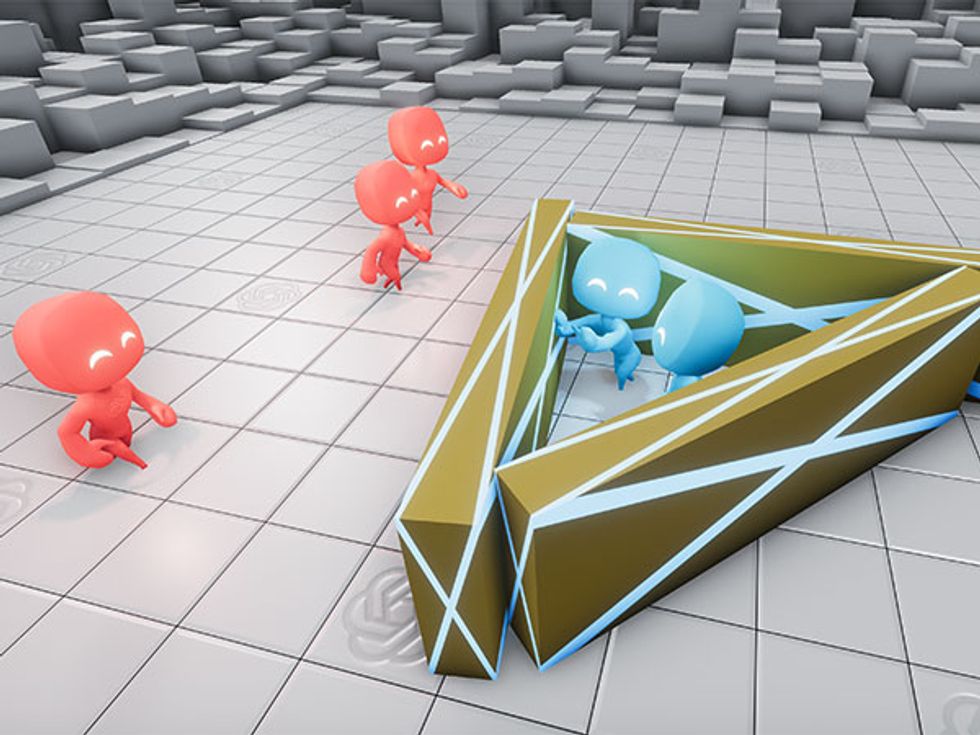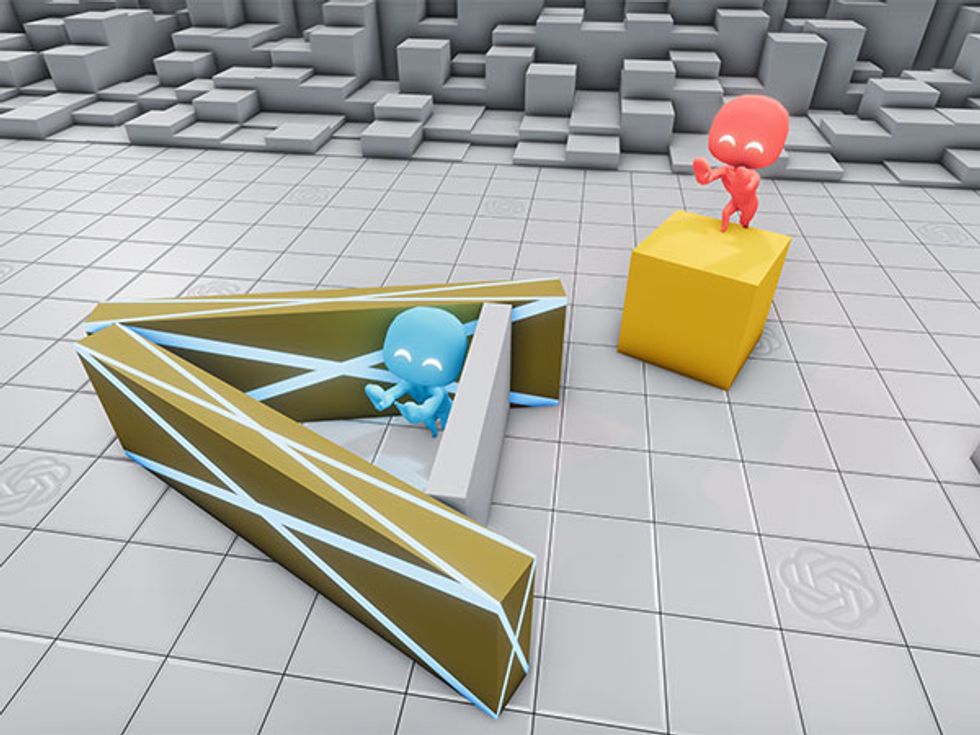After 25 million games, the AI agents playing hide-and-seek with each other had mastered four basic game strategies. The researchers expected that part.
After a total of 380 million games, the AI players developed strategies that the researchers didn’t know were possible in the game environment—which the researchers had themselves created. That was the part that surprised the team at OpenAI, a research company based in San Francisco.
The AI players learned everything via a machine learning technique known as reinforcement learning. In this learning method, AI agents start out by taking random actions. Sometimes those random actions produce desired results, which earn them rewards. Via trial-and-error on a massive scale, they can learn sophisticated strategies.
In the context of games, this process can be abetted by having the AI play against another version of itself, ensuring that the opponents will be evenly matched. It also locks the AI into a process of one-upmanship, where any new strategy that emerges forces the opponent to search for a countermeasure. Over time, this “self-play” amounted to what the researchers call an “auto-curriculum.”
According to OpenAI researcher Igor Mordatch, this experiment shows that self-play “is enough for the agents to learn surprising behaviors on their own—it’s like children playing with each other.”
Reinforcement is a hot field of AI research right now. OpenAI’s researchers used the technique when they trained a team of bots to play the video game Dota 2, which squashed a world-champion human team last April. The Alphabet subsidiary DeepMind has used it to triumph in the ancient board game Go and the video game StarCraft.
Aniruddha Kembhavi, a researcher at the Allen Institute for Artificial Intelligence (AI2) in Seattle, says games such as hide-and-seek offer a good way for AI agents to learn “foundational skills.” He worked on a team that taught their AllenAI to play Pictionary with humans, viewing the gameplay as a way for the AI to work on common sense reasoning and communication. “We are, however, quite far away from being able to translate these preliminary findings in highly simplified environments into the real world,” says Kembhavi.

In OpenAI’s game of hide-and-seek, both the hiders and the seekers received a reward only if they won the game, leaving the AI players to develop their own strategies. Within a simple 3D environment containing walls, blocks, and ramps, the players first learned to run around and chase each other (strategy 1). The hiders next learned to move the blocks around to build forts (2), and then the seekers learned to move the ramps (3), enabling them to jump inside the forts. Then the hiders learned to move all the ramps into their forts before the seekers could use them (4).
The two strategies that surprised the researchers came next. First the seekers learned that they could jump onto a box and “surf” it over to a fort (5), allowing them to jump in—a maneuver that the researchers hadn’t realized was physically possible in the game environment. So as a final countermeasure, the hiders learned to lock all the boxes into place (6) so they weren’t available for use as surfboards.

In this circumstance, having AI agents behave in an unexpected way wasn’t a problem: They found different paths to their rewards, but didn’t cause any trouble. However, you can imagine situations in which the outcome would be rather serious. Robots acting in the real world could do real damage. And then there’s Nick Bostrom’s famous example of a paper clip factory run by an AI, whose goal is to make as many paper clips as possible. As Bostrom told IEEE Spectrum back in 2014, the AI might realize that “human bodies consist of atoms, and those atoms could be used to make some very nice paper clips.”
Bowen Baker, another member of the OpenAI research team, notes that it’s hard to predict all the ways an AI agent will act inside an environment—even a simple one. “Building these environments is hard,” he says. “The agents will come up with these unexpected behaviors, which will be a safety problem down the road when you put them in more complex environments.”
AI researcher Katja Hofmann at Microsoft Research Cambridge, in England, has seen a lot of gameplay by AI agents: She started a competition that uses Minecraft as the playing field. She says the emergent behavior seen in this game, and in prior experiments by other researchers, shows that games can be a useful for studies of safe and responsible AI.
“I find demonstrations like this, in games and game-like settings, a great way to explore the capabilities and limitations of existing approaches in a safe environment,” says Hofmann. “Results like these will help us develop a better understanding on how to validate and debug reinforcement learning systems–a crucial step on the path towards real-world applications.”
Baker says there’s also a hopeful takeaway from the surprises in the hide-and-seek experiment. “If you put these agents into a rich enough environment they will find strategies that we never knew were possible,” he says. “Maybe they can solve problems that we can’t imagine solutions to.”
A version of this post appears in the November 2019 print issue as “AI Agents Play Hide-and-Seek.”
